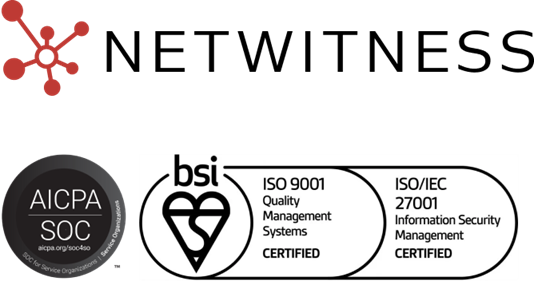What is the Threat Intelligence Lifecycle?
The Threat Intelligence Lifecycle is the structured process used by cybersecurity teams to collect, analyze, and apply threat intelligence to defend against evolving cyberthreats. It transforms raw data into actionable insights, helping organizations strengthen their cybersecurity posture, reduce cybersecurity risks, and improve threat defense.
The Threat Intelligence Lifecycle (also called the Cyber Threat Intelligence Lifecycle) is a continuous, feedback-driven process that guides how cyber threat intelligence (CTI) is gathered, analyzed, shared, and used.
This lifecycle ensures that security teams focus on the right intelligence, enabling faster detection and more effective responses to cyberattacks. It’s not just about collecting data from multiple sources, it’s about transforming that data into meaningful insight that drives decision-making and improves an organization’s overall cybersecurity posture.
Synonyms
- Cyber Threat Intelligence (CTI) Lifecycle
- Cyber Threat Intelligence (CTI)
- Security Intelligence Cycle
- Intelligence Cycle
Why the Threat Intelligence Lifecycle Matters
Threat intelligence is only as good as the process behind it. Without structure, teams’ risk being overwhelmed by irrelevant or incomplete data. A defined lifecycle helps:
- Prioritize real threats: Focus on the most relevant cyberthreats to your organization.
- Enhance visibility: Improve understanding of attack patterns through continuous threat intelligence analysis.
- Enable collaboration: Share verified intelligence across teams and tools.
- Accelerate response: Turn raw data into quick, actionable intelligence that strengthens threat defense.
By following this lifecycle, security teams can stay ahead of attackers, rather than reacting after the damage is done.
How the Threat Intelligence Lifecycle Works
The lifecycle typically includes six phases, each designed to ensure intelligence remains relevant, actionable, and up to date:
- Planning and Direction – Define objectives and identify what intelligence is needed.
- Collection – Gather raw data from internal logs, open sources, sensors, and threat intelligence tools.
- Processing – Convert raw data into a usable format, removing noise and duplicates.
- Analysis – Examine the data to identify patterns, attack vectors, and potential cyberattacks. This is where threat intelligence software and analytics play a major role.
- Dissemination – Share findings with stakeholders and SOC teams to support threat defense decisions.
- Feedback – Evaluate the effectiveness of the intelligence and refine collection priorities for the next cycle.
Each phase feeds into the next, creating a continuous loop of improvement—a true intelligence cycle.
Best Practices for Managing the Threat Intelligence Lifecycle
To get the most value from cyber threat intelligence, organizations should:
- Integrate multiple data sources: Combine internal telemetry with external intelligence feeds.
- Automate routine processes: Use threat intelligence software to streamline collection and analysis.
- Collaborate across teams: Ensure SOC, IR, and threat hunting teams have shared visibility.
- Measure outcomes: Continuously assess how intelligence improves your cybersecurity posture.
- Refine regularly: Treat the lifecycle as an evolving process, not a one-time setup.
NetWitness Connection
NetWitness enhances every phase of the Threat Intelligence Lifecycle – from collection to analysis to response. With built-in threat intelligence tools, behavioral analytics, and advanced threat intelligence software integrations, NetWitness helps organizations transform data into actionable intelligence.
By combining network, endpoint, and cloud visibility, NetWitness empowers security teams to detect and respond to cyberthreats faster, strengthening their overall cybersecurity posture.
Related Terms & Synonyms
- Cyber Threat Intelligence (CTI): The process of collecting and analyzing data about potential or existing cyberthreats to improve security decisions.
- Cyber Threat Intelligence (CTI) Lifecycle: A structured, continuous process that defines how CTI is gathered, processed, and used to enhance threat detection and response.
- Security Intelligence Cycle: A similar concept to the threat intelligence lifecycle, focusing specifically on analyzing and applying intelligence to strengthen organizational security.
- Intelligence Cycle: A broader intelligence-gathering framework used across domains – adapted in cybersecurity as the foundation for managing threat intelligence.
People Also Ask
1. What is cyber threat intelligence?
Cyber threat intelligence (CTI) refers to the collection and analysis of data about potential or existing attacks that threaten an organization. It helps teams understand adversaries, attack methods, and how to prevent or mitigate cyberattacks.
2. What is a threat intelligence platform?
A threat intelligence platform is a tool or software that aggregates, analyzes, and distributes intelligence data to help organizations detect and respond to cyberthreats more effectively.
3. What is CTI in cybersecurity?
CTI (Cyber Threat Intelligence) in cybersecurity refers to the process and insights used to identify and understand cybersecurity risks, helping security teams make informed decisions about threat defense and incident response.
4. What is threat analysis?
Threat analysis involves examining data and indicators to detect potential cyberattacks or vulnerabilities. It’s a crucial stage in the threat intelligence lifecycle, where raw information becomes actionable intelligence.




